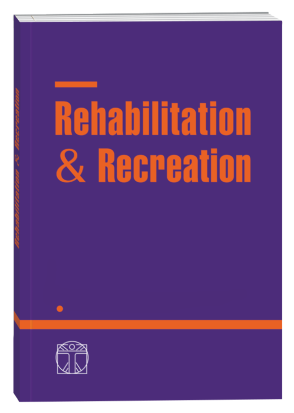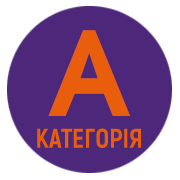ADVANTAGES AND DISADVANTAGES OF USING REHABILITATION MEASURES IN RHEUMATOID ARTHRITIS
DOI:
https://doi.org/10.32782/2522-1795.2025.19.2.11Keywords:
physical therapy, rehabilitation measures, rheumatoid arthritis, musculoskeletal system, functional disorders, ICF, therapeutic exercises, pain syndrome, quality of lifeAbstract
The article summarises and highlights the main advantages and disadvantages of using rehabilitation measures for rheumatoid arthritis. The prevalence of rheumatoid arthritis is 0.5–1.8%, and 80% of all cases occur between the ages of 35 and 50. It has been noted that the inflammatory process in the joints leads to pain, morning stiffness, swelling, structural damage and functional impairment. As a result of these pathological changes, patients with rheumatoid arthritis have a limited ability to self-care, mobility, reduced daily activities, disability and a significant deterioration in quality of life. The purpose of the study is to analyse and highlight the main advantages and disadvantages of using rehabilitation measures in rheumatoid arthritis. Material: analysis and synthesis of scientific data in the modern scientific and methodological literature, databases (PubMed, Medline, Cochrane Library, Embase, Google Scholar) on the use of rehabilitation measures in rheumatoid arthritis. Results. Carefully selected therapeutic exercises and other means of physical therapy help to suspend further progression of the disease, restore the functions of the affected joints, improve the physical condition and quality of life of the patient. Most of the recommended therapeutic exercises are intended primarily for the lower extremities (ankles), without taking into account the upper extremities (wrists, hands), which are primarily affected by rheumatoid arthritis. There are still a number of problems in the rehabilitation treatment of rheumatoid arthritis, primarily related to the timely and comprehensive use of modern rehabilitation measures. A structured approach to the rehabilitation process is required for a systematic assessment of the consequences of the disease, appropriate definition and evaluation of the goals of rehabilitation interventions, and active partnership with the patient. The existing results of treatment and rehabilitation of patients with rheumatoid arthritis in general clinical practice do not always meet the needs of patients. In this pathology, the activity and participation of the patients in question are not always taken into account in the process of rehabilitation treatment, which is contrary to the main provisions of the ICF. Conclusions. In the process of rehabilitation and social adaptation of patients with rheumatoid arthritis, appropriate rehabilitation measures and technologies are needed that would solve the ultimate goal of physical therapy, that is, to adapt the patient to everyday life, domestic and professional conditions by improving the quality of life.
References
1. Богдановська Н.В., Блайда І.М. Реабілітаційні підходи до відновного лікування ревматоїдного артриту на сучасному етапі. Public Health Journal. 2023. № 4. С. 88–94. https://doi.org/10.32782/pub.health.2023.4.2
2. Богдановська Н.М., Бойченко К.Ю. Сучасні стратегії відновлення повсякденної активності при ревматоїдному артриті. Rehabilitation & Recreation. 2023. № 17. С. 23–31. https://doi.org/10.32782/2522-1795.2023.17.3
3. Бочкова Н.Л., Шевцова А.В. Методи та засоби фізичної реабілітації при ревматоїдному артриті. Науковий часопис НПУ ім. М. П. Драгоманова. 2021. Вип. 3K (131). С. 53–55. https://doi.org/10.31392/NPU-nc.series%2015.2021.3%D0%9A(131).11
4. Григус І.М., Ногас А.О. Відновлення функціональних порушень верхніх кінцівок у пацієнтів із ревматоїдним артритом у результаті впровадження технології реабілітаційних заходів. Rehabilitation & recreation. 2023. № 17. С. 48–60. https://doi.org/10.29038/2220-7481-2017-01-130-135
5. Джус М.Б. Фактори ризику розвитку низького рівня якості життя у дорослих хворих з ювенільним ідіопатичним артритом. Галицький лікарський вісник. 2018. Т. 25. № 2. С. 7–10. https://doi.org/10.21802/gmj.2018.2.12
6. Дубовик В.Ю., Грузєва Т.С., Іншакова Г.В. Методи оцінки якості життя пацієнтів із ревматоїдним артритом: літературні огляди. Клінічна та профілактична медицина. № 2. С. 66–72. https://doi.org/10.31612/2616-4868.2(20).2022.08
7. Дячук Д.Д. Запровадження пацієнт-орієнтованого підходу та удосконалення організації медичної допомоги на сучасному етапі: огляд літератури. Клінічна та профілактична медицина. 2023. Т. 1. № 23. С. 67–77. https://doi.org/10.31612/2616-4868.1(23).2023.10
8. Кононенко Н.М., Чікіткіна В.В. Основні методи фізичної реабілітації хворих на ревматоїдний артрит. Український журнал медицини, біології та спорту. 2022. Т. 7. № 4(38). С. 19–24. URL: https://jmbs.com.ua/pdf/7/4/jmbs0-2022-7-4-019.pdf
9. Коритко З.І., Гайдук О.А., Базильчук О.В. Ефективність фізичної реабілітації в пацієнтів з ревматоїдним артритом. Rehabilitation & Recreation. 2023. № 17. С. 76–84. http://nbuv.gov.ua/UJRN/rehrec_2023_17_10.
10. Коритко З.І., Майструк М.І. Вплив фізичної реабілітації на перебіг захворювання та психоемоційний стан пацієнтів із ревматоїдним артритом. Art. Med. 2023. Т. 4. № 28. С. 48–53. https://doi.org/10.21802/artm.2023.4.28.48
11. Міжнародна класифікація функціонування, обмеження життєдіяльності та здоров’я / пер. з англ. Київ, 2018. 1048 с.
12. Неханевич О.Б., Канюка Є.В. Ревматоїдний артрит – сучасний погляд на проблему та особливості застосування реабілітаційних заходів. Rehabilitation & Recreation. 2023. № 17. С. 116–122. https://doi.org/10.32782/2522-1795.2023.17.13
13. Ногас А.О. Ефективність застосування реабілітаційних заходів для відновлення функції суглобів у пацієнтів із ревматоїдним артритом. Rehabilitation & recreation. 2023. № 14. С. 71–81. https://doi.org/10.32782/2522-1795.2023.14.8
14. Ногас А.О. Оцінка стану здоров’я пацієнтів із ревматоїдним артритом у результаті впливу програми фізичної терапії. Public Health Journal. 2023. № 4. С. 58–64. https://doi.org/10.32782/pub.health.2023.4.8
15. Ревматоїдний артрит: адаптована клінічна настанова, заснована на доказах : Наказ МОЗ України від 11.04.2014 № 263. URL: www.moz.gov.ua (дата звернення: 04.05.2025).
16. Поник Р.М., Коритко З.І. Захворюваність та особливості реабілітації хворих на ревматоїдний артрит в умовах сьогодення. Здобутки клінічної і експеримент. медицини. 2019. № 3. С. 183–187. https://doi.org/10.11603/1811-2471.2019.v.i3.10504
17. Стратегія розвитку системи охорони здоров’я до 2030 р. https://moz.gov.ua/uploads/ckeditor/2022.pdf (дата звернення: 20.04.2025).
18. Уніфікований клінічний протокол первинної, вторинної (спеціалізованої), третинної (високоспеціалізованої) медичної допомоги та медичної реабілітації «Ревматоїдний артрит». Український ревматологічний журнал. 2015. Т. 1, № 59. С. 9–21.
19. Явтушенко П.В., Горошко В.І. Роль фізичних вправ у реабілітації хворих на ревматоїдний артрит. Rehabilitation & Recreation. 2022. № 13. С. 86–91. https://doi.org/10.32782/2522-1795.2022.13.11
20. Boers M. Patient global assessment to define remission in rheumatoid arthritis: quo vadis? Ann. Rheum. Dis. 2021 March. Vol. 80, № 3. P. 277–279. https://doi.org/10.1136/annrheumdis-2020-218802
21. Elif Gür Kabul et al. The effect of rheumatoid arthritis on upper extremity functions: a kinematic perspective. Inter. J. Rheumatic. Diseases. 2022. Vol. 25. № 11. Р. 1279-1287. https://doi.org/10.1111/1756-185x.14421
22. Grygus I.M., Nogas A.O. The effect of a physical therapy programme on the condition of upper limb muscles in patients with rheumatoid arthritis. European Journal of Clinical and Experimental Medicine. 2023. Vol. 21, № 4. P. 723–729. https://doi.org/10.15584/ejcem.2023.4.10
23. Grygus I.M., Nogas A.O., Zdanyuk V.V. Dynamics of movement amplitude indicators in joints of patients with rheumatoid arthritis. Med. perspekt. 2023. № 28(4). С. 166–173. https://doi.org/10.26641/2307-0404.2023.4.294222
24. Lane C.Y., Lo D., Thoma L.M., et al. Sociocultural and economic disparities in physical therapy utilization among insured older adults with rheumatoid arthritis. J. Rheumatol. 2023. Vol. 50. No 11. P. 1414–1421. https://doi.org/10.3899/jrheum.2023-0103
25. Nogas, A., Grygus, I., Hutsman, S., Diachuk, V., Blayda, I. Analysis of the effectiveness of the developed system of physical therapy for patients with rheumatoid arthritis in terms of daily activity, health status and quality of life. Physical rehabilitation and recreational health technologies. 2024. Vol. 9. № 2. P. 90–97. https://doi.org/10.15391/prrht.2024-9(2).07
26. Pozmohova N. et al. Effect of occupational therapy intervention in a comprehensive rehabilitation program on patients with early rheumatoid arthritis. J. Phys. Educ. Sport. 2021. № 10. P. 3024–3029. https://doi.org/10.7752/jpes.2021.s5402
27. Studenic P. et al. American College of Rheumatology/EULAR Remission Criteria for Rheumatoid Arthritis: 2022 Revision. Arthrit. Rheumatol. 2023 January. Vol. 75, № 1. P. 15–22. https://doi.org/10.1002/art.42347
Downloads
Published
How to Cite
Issue
Section
License

This work is licensed under a Creative Commons Attribution-NonCommercial-NoDerivatives 4.0 International License.





